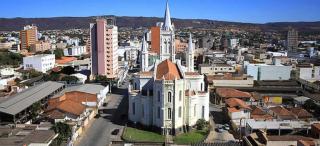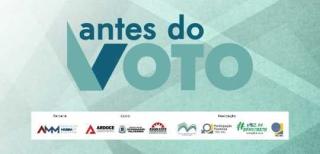Veja Também -
 Pessoas com TEA têm direito à cotas em concursos públicos
Pessoas com TEA têm direito à cotas em concursos públicos Governo de Minas fortalece o uso da linguagem simples
Governo de Minas fortalece o uso da linguagem simples Prefeitura de Montes Claros lança plataforma para emitir alvarás e agilizar construções na cidade
Prefeitura de Montes Claros lança plataforma para emitir alvarás e agilizar construções na cidade Minas Gerais entrega Medalha da Inconfidência a 171 personalidades e instituições
Minas Gerais entrega Medalha da Inconfidência a 171 personalidades e instituições Projeto 'Antes do Voto 2024' chega a Governador Valadares, Montes Claros e Uberlândia
Projeto 'Antes do Voto 2024' chega a Governador Valadares, Montes Claros e Uberlândia- Veja + Revelia News
Revelia News
Postado dia 31/01/2023 às 00:42:43
Spanish-Speaking Streamers Are the Hottest Thing on Twitch
Spanish is the fastest-growing language on Twitch, but Latin America’s influencer economy is still in early stages of development.
Samantha Rivera was studying engineering in Mexico in 2020 when a group of friends convinced her she could draw an audience by streaming herself playing Call of Duty, the video game she played in her spare time. Rivera set up channels on Amazon.com Inc.’s livestreaming service Twitch, which caters to gamers, and Alphabet Inc.’s YouTube and Facebook Gaming. They took off so quickly that she soon began to question whether she should really devote so much time to her studies.
“The first time I told my parents I wanted to drop out they said I was nuts,” says the 24-year-old, who goes by the name “Rivers_gg” online. But her channels, where she plays video games, laughs at memes and watches soccer, continued to grow. “I kept studying for a semester, and after I said I couldn’t do both things, they understood,” she says. She’s now one of the top 100 most popular Twitch streamers in the world, according to TwitchTracker, streaming almost every day for an average audience of about 19,000 live viewers.
Rivera’s success comes amid a broader spike in interest in Spanish-language streaming on Twitch, which says it’s the fastest-growing language on its service. From 2019 to 2022, the audience for Spanish-language Twitch livestreams increased sixfold, and Spanish shot up from the seventh-most-watched language category on the site to the second, behind English.
Most of the world’s Spanish speakers live in Latin America, which has more than its share of gamers: About 80% of people aged 10 to 65 in developed residential areas play video games, according to analytics firm NewZoo, whose data focused on Argentina, Brazil, Chile, Colombia and Mexico. But Latin America has never been a major revenue source for social media companies, largely because it lacks a strong digital advertising market. The region has among the lowest digital advertising spending in the world, according to Insider Intelligence. There’s also little of the economic infrastructure that has allowed digital content creators in such places as the US to make a living from sponsorships and other businesses.
 Rivera on Twitch at her home in Monterrey, Mexico.
Rivera on Twitch at her home in Monterrey, Mexico.
This poses a challenge to Twitch, which makes revenue through a combination of advertising and taking a cut of the fees viewers pay to subscribe to specific channels. It also makes it harder for streamers like Rivera, who has about 7,700 paying subscribers, according to analytics service TwitchTracker, but didn’t give specific details about her income in an interview with Bloomberg Businessweek.
Ana Martins, a partner at Brazil-based venture capital firm Atlantico, describes the market for social media influencers in Latin America as nascent. “Despite their influence, creators struggle to monetize,” she says. “As we think about the coming decade, there is so much value to be created in the region’s creator economy.”
Twitch was founded in 2011 in San Francisco, and in 2014 hired Ignacio Estanga, now its vice president for Latin American partnerships. Streamers in the region at the time complained that Twitch didn’t translate pages into Spanish and lacked tools to help fans discover their content or donate to them in their local currency, says Estanga, who now works from the company’s Mexico City office. In the past couple of years, Twitch has ramped up its presence in the region by increasing its staffing there, adding marketing, creator partner and sales teams. (It declined to say how many people it employs in Mexico.) Twitch has also added servers to support livestreaming operations and in-app features for tagging and discovering Spanish-language streamers.
The emergence of Spanish-language Twitch has been marked by the rise of a few big stars, who often devote considerable effort to promoting their ostensible rivals, appearing on one another’s channels and replaying other streamers’ content for their audiences. At times, they rely on a spectacle that has become peculiarly popular on Twitch: the influencer-on-influencer boxing match. In June 2022, Spanish streamer Ibai Llanos Garatea, Twitch’s fourth-most-watched celebrity, assembled a lineup of popular Spanish-speaking content creators and had them face off in a boxing ring. The event drew 3.4 million concurrent viewers to a single livestream—the largest such audience the service has ever seen on a single livestream. On Jan. 29., a Twitch influencer held an awards show for Spanish and Latin American streamers that drew 1.7 million people to the platform, the third-largest live audience in its history.
As the audience builds, creators like Rivera say they’ve begun to feel like some of their viewers object to the idea of social media influencer as a job category. Poverty is common in Latin America, and in Mexico, Rivera says, hard work is held in high cultural esteem—and some of her viewers seem to think video game commentary doesn’t count. Osvaldo “ElMariana” Flores, who boasts 6.4 million followers on Twitch, says he gets a small but steady stream of criticism. In the US, he says, Twitch streamers’ fans might express support and admiration when they show off a new car or house. In Mexico, “this kind of life is not accepted yet.”




